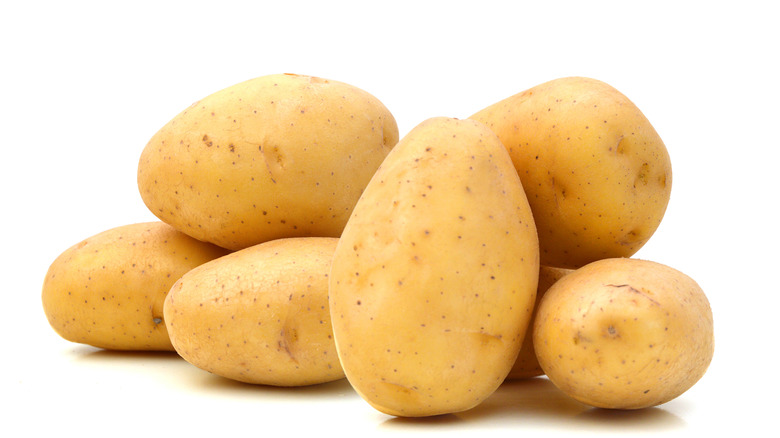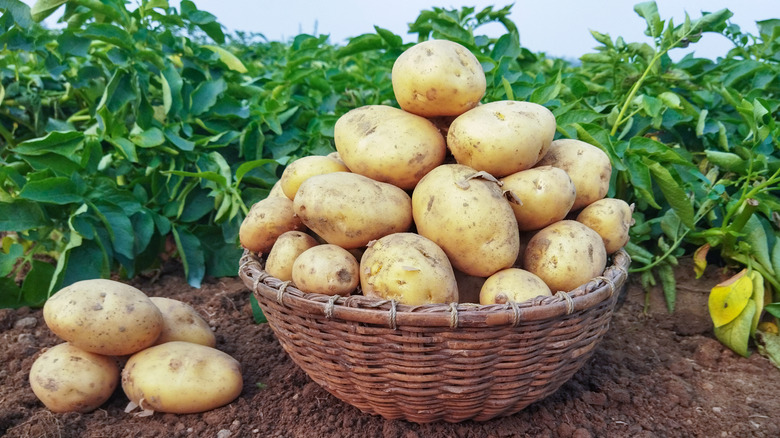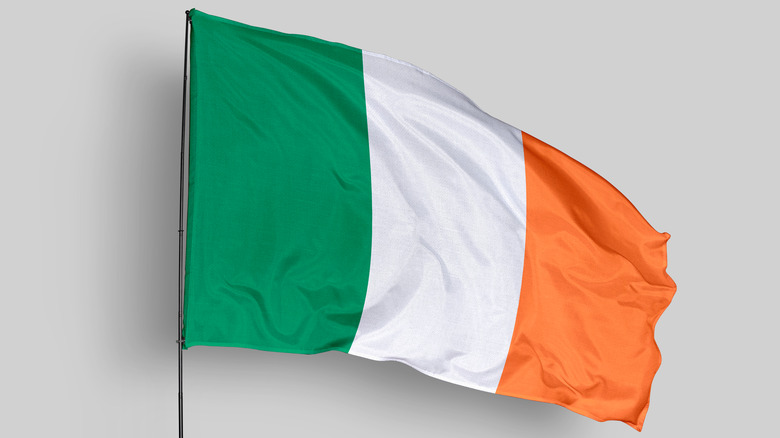What Caused The Great Irish Potato Famine?
The Irish Potato Famine is a point in history that has been burned into collective conscious — but many people are not aware of what caused it, what it consisted of, or the many people killed by the catastrophe.
As noted by Science, the potato originated in Peru between 7,000 and 10,000 years ago, before Spanish explorers brought the vegetable to Europe. The famine, also known as the Great Hunger, started in the mid-1800s when a mold spread through Ireland's potato crops (per History). This mold caused plant disease that effectively wiped out half of the country's potatoes in its first year and another three quarters of the crop over the next seven years. Potatoes are the backbone of the Irish diet, so the immense loss of the root veggie resulted in hunger, malnutrition, and death. About one million Irish died of starvation and other ailments associated with the scourge. Millions of others had to leave their home country to seek food and shelter elsewhere.
The potato was a reliable, easily attainable food that sustained the Irish, especially during the winter (via History). It was also a food that many poor Irish citizens depended on for nutrition. During the famine, Ireland was effectively governed as a colony by the Great Britain, and due to religious discrimination, many Irish Catholics worked "as tenant farmers forced to pay rent to the landowners," who were largely English and Anglo-Irish families.
The havoc wreaked by the famine
BBC notes that another contributing factor of the Irish Potato Famine was the summer of 1845, which was humid, moist, and created the ideal environment for the blight to run rampant throughout the country's crops. What exactly did this do to the potatoes? The vegetables were covered in "mysterious dark splotches" and when harvested, were "shrunken, mushy, and inedible" (via Smithsonian Magazine).
Once it was clear that this infection was impacting crops and would soon have a grave effect on Ireland, British Parliament did away with laws and tariffs to make corn and bread more easily accessible (per History). But lifting tariffs on these additional food sources proved to be too little to solve the crisis.
Absurdly enough, Ireland continued to export foods during the potato famine, like livestock, butter, peas, beans, fish, and honey – and these exports may have increased during the emergency, according to History. To this day, there is still debate about what more the British government could have done, and whether it was due to "malice or incompetence." History notes that in 1997, British Prime Minister Tony Blair actually issued a formal apology to Ireland for the U.K. government's handling of the famine at the time.
The aftermath of the famine
Clemson clarifies that "late blight, caused by the water mold, Phytophthora infestans" is the culprit behind the Irish Potato Famine between 1845 and 1849. Researchers believe this mold may have been carried to Ireland by potatoes exported from North America to Europe. In recent years, scientists have studied the pathogen that led to the outbreak. BBC reports that this pathogen, called HERB-1, is likely now extinct, but after the famine, it continued to spread and attack other crops around the world. The strain has since been replaced by another strain, called US-1, which is currently the leading strain. This knowledge will be helpful to prevent such an outbreak in the future.
However, Paste opines that the potato famine's true cause was not HERB-1 itself, but capitalism, noting how the Irish continued to export scores of food and were unable to actually consume said food themselves. It's a parallel seen today, in which food insecurity and scarcity plagues over 15 million households throughout the U.S., and experts note that hunger is more of a result of problematic policies than by an actual dearth of food itself (per Center for American Progress).
The ill effects of the Great Hunger
Christine Kinealy, a Quinnipiac University professor and director of the Great Hunger Museum in Connecticut, authored of a graphic novel on the potato famine. She tells Paste that "poverty, hunger and famine exist today – sadly because the same social structures and attitudes toward poverty still exist." While some speak about the famine as if it is a freak occurrence that'd never befall anyone today, Kinealy suggests that couldn't be further from the truth.
Paste also notes that there are currently "seven times as many Irish-Americans in the US than Irish in Ireland," illustrating the insidious and far-reaching impact of the famine in the 1800s. Science notes that "the Irish population of 4.5 million is less than three-quarters of what it was at the start of the famine," and to this day, "the island still has not reached its pre-famine population levels," according to Smithsonian Magazine. Clearly, Ireland's famine is not ancient history by any means, and its impact has permeated to today.



